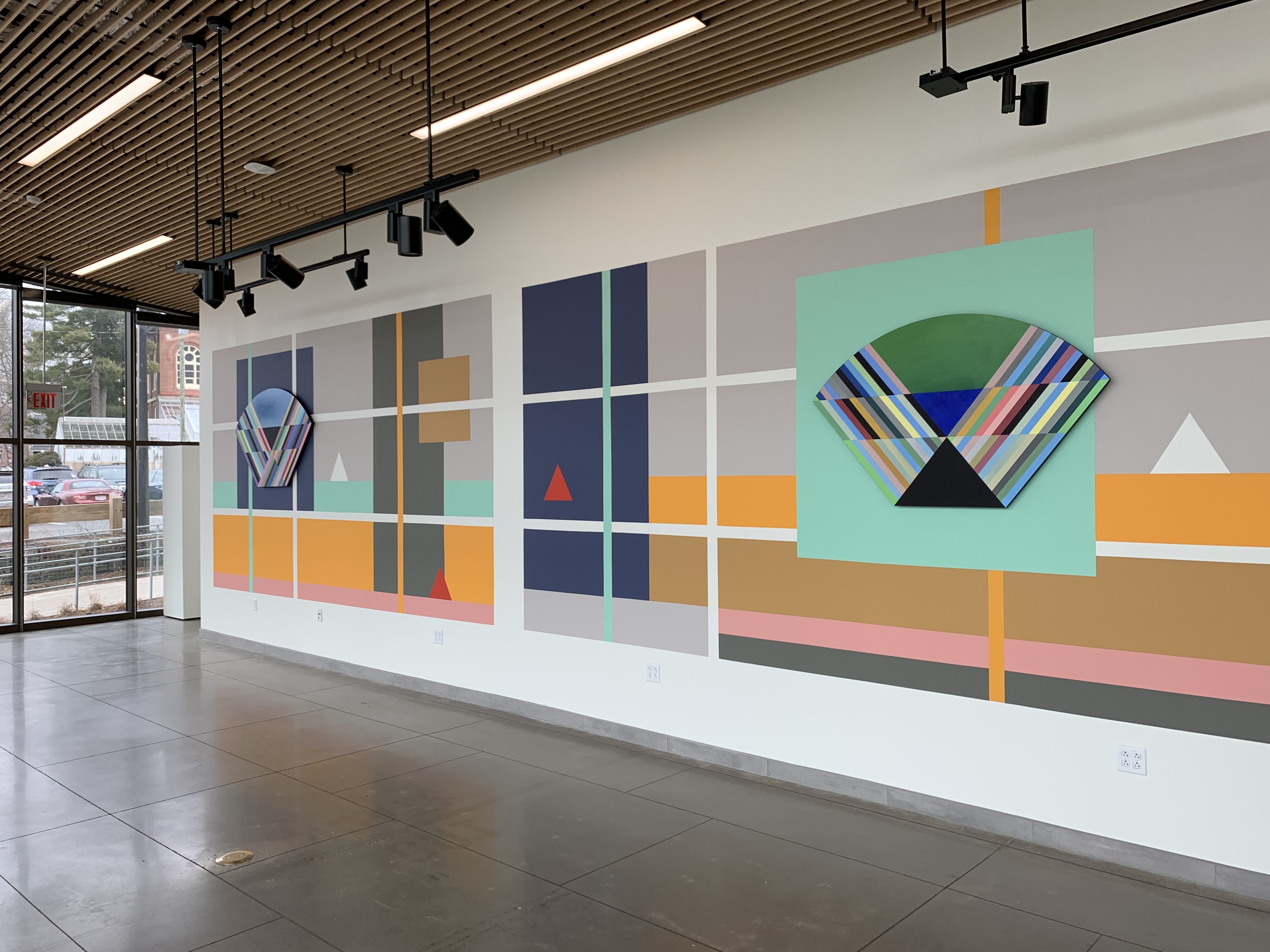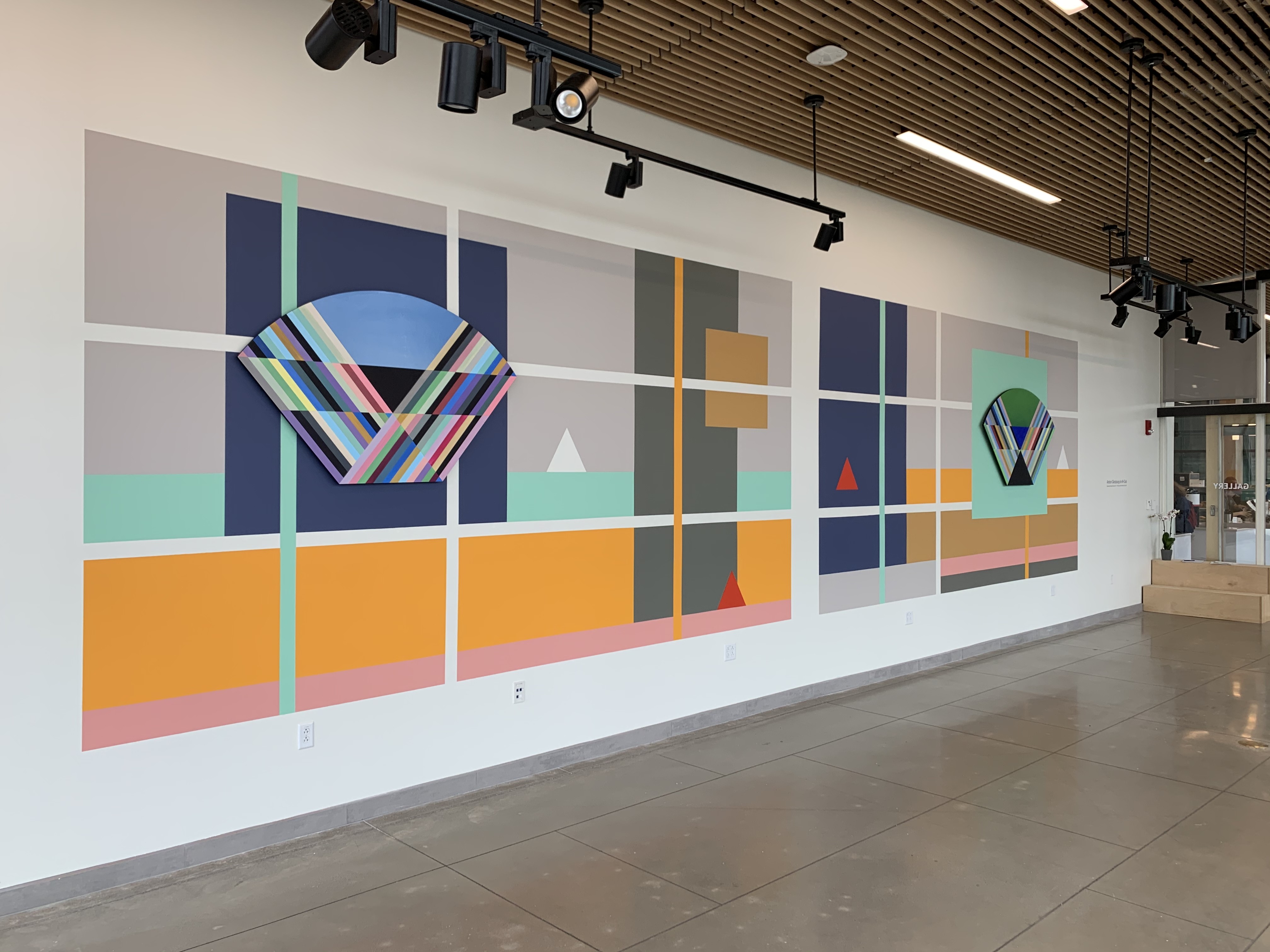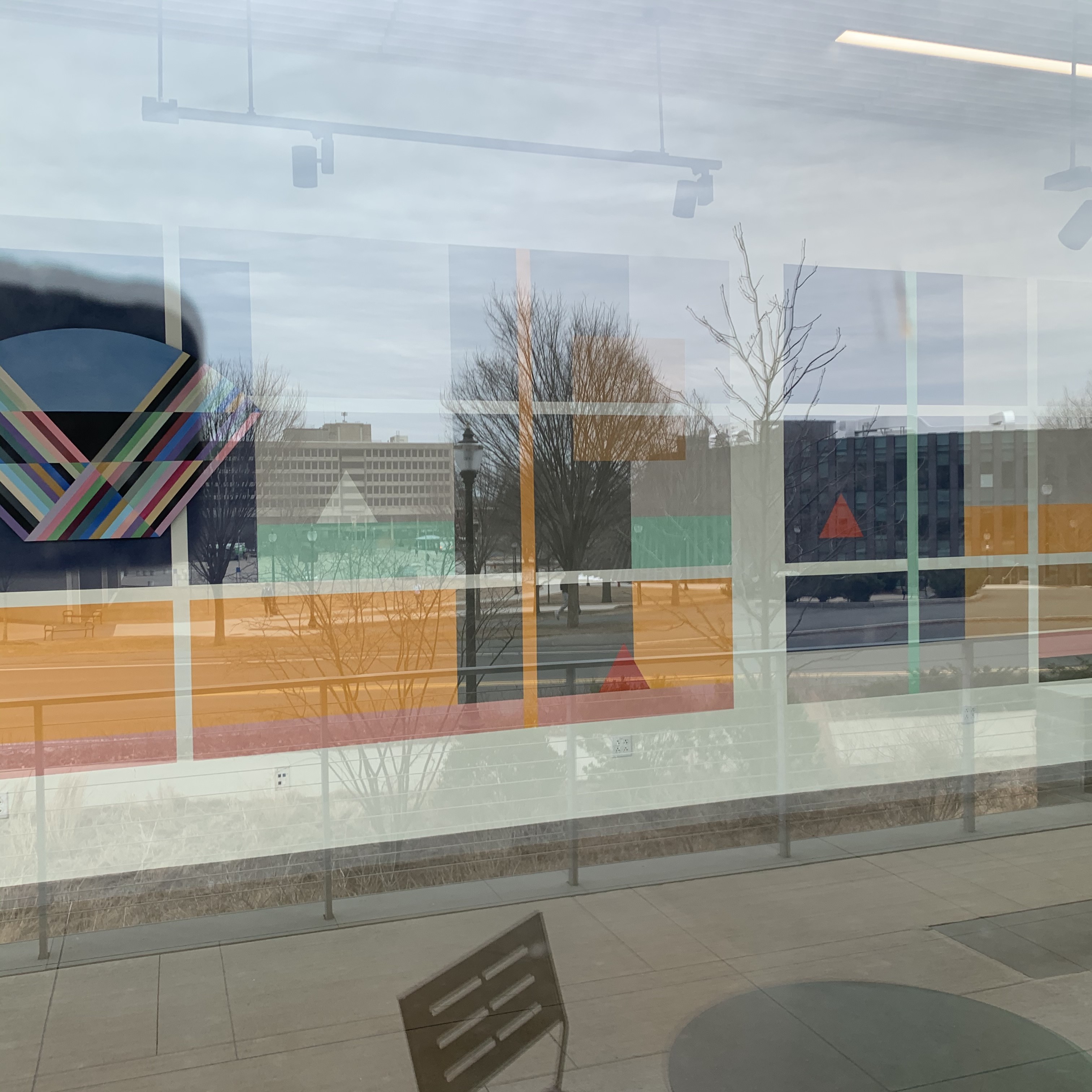Murals: interior flat wall enamel (Behr brand) (two rectangles of 184 inches x 99 inches /467.4 x 251.5 cm) each
Paintings: VIEW_5A_02, VIEW_5A_04, pigment, acrylic and oil on wood. 37.5 × 60 inches.
Anton Ginzburg: In-N-Out
at University of Massachusetts Amherst
Department of Architecture
curated by Grigori Fateyev
The exhibition "In-N-Out" by Anton Ginzburg is an installation that includes a mural and paintings from the VIEWs series that examines the process of viewing through a suggested 'window' into opposite directions of the diagrammatic landscape. The installation is both a reaction to and intervention in the existing space of the gallery.
A subtle effect of the layered and overlapping geometries that create the Design Building Gallery is the quality of the space in flux, in perpetual transition. In his essay "Of Other Spaces," Michel Foucault states, "the heterotopia is capable of juxtaposing in single real space, several spaces, several sites that in themselves incompatible." The outer boundary of the room is blurred; the condition heightens the sense that could be described as "heterotopia," the space that is many-places. The site of the mural is a space that shares many identities: inside of the building and outside of the building, the space of the observation, and the space to be observed.
The mural is composed of two rectangles, with an aspect ratio of a video screen. Two frames of the composition suggest a video sequence, a proto moving image. The wall is not dematerialized, but the connection between the wall and image space of the mural is in tension. Through the tools of repetition, scale, and shift, Anton Ginzburg expands the diagrammatic depth of the surface, engaging the entire space of the gallery. The gridlines are an echo of the curtain wall; they function as a framing device for the elements in each screen and appear in both parts of the mural suggesting a continuous structure and visual rhythm.
Two paintings (VIEW_5A_03 and VIEW_5A_04) stacked on top of the mural's surface function as the positioning of viewpoint (eye) in relation to the color fields of the abstract landscape. Their geometries are based on diagrammatic representations of the binocular field of human vision. The optical diagram is treated as a subject and is interpreted as a condensed color-scape.
In the essay "Sculpture in the Expanded Field," Rosalind Krauss's describes a condition where architecture and non-architecture intersect, "a process of mapping the axiomatic features of the architectural experience- the abstract conditions of openness and closure-onto the reality of given space." By utilizing and drawing upon the geometries of seeing, framing, and representation as they were developed by artists and architects associated with the Constructivist movement, Anton Ginzburg's work studies the relationship between physical and represented space. His paintings and murals, and the way they are installed invite one to inhabit contemporary condition and conceptual landscape through the prism of the modernist vocabulary.
https://www.umass.edu/architecture/event/anton-ginzburg-n-out
- About
-
Exhibitions
Algorithm installationAltered SpaceSurfaceAshnestA&IDresden SeriesTranslucent ConcreteIn-N-OutPartial EclipseVIEWsConstruction ProxyStaring
and Cursing Russian Revolution.
A Contested LegacyBlue Flame: Constructionsand Initiatives Hybrid GazeTerra Corpus (Walking the Seaand Hyperborea) At the Back of the North WindCounter Geometries - Works
- Publications
-
News
- Subscribe








